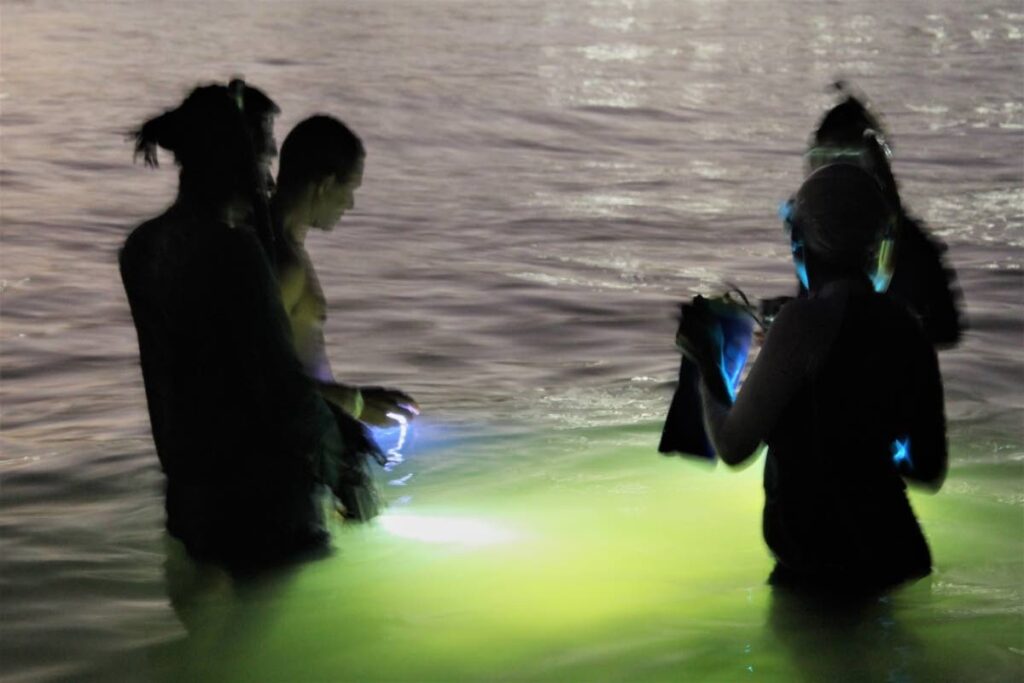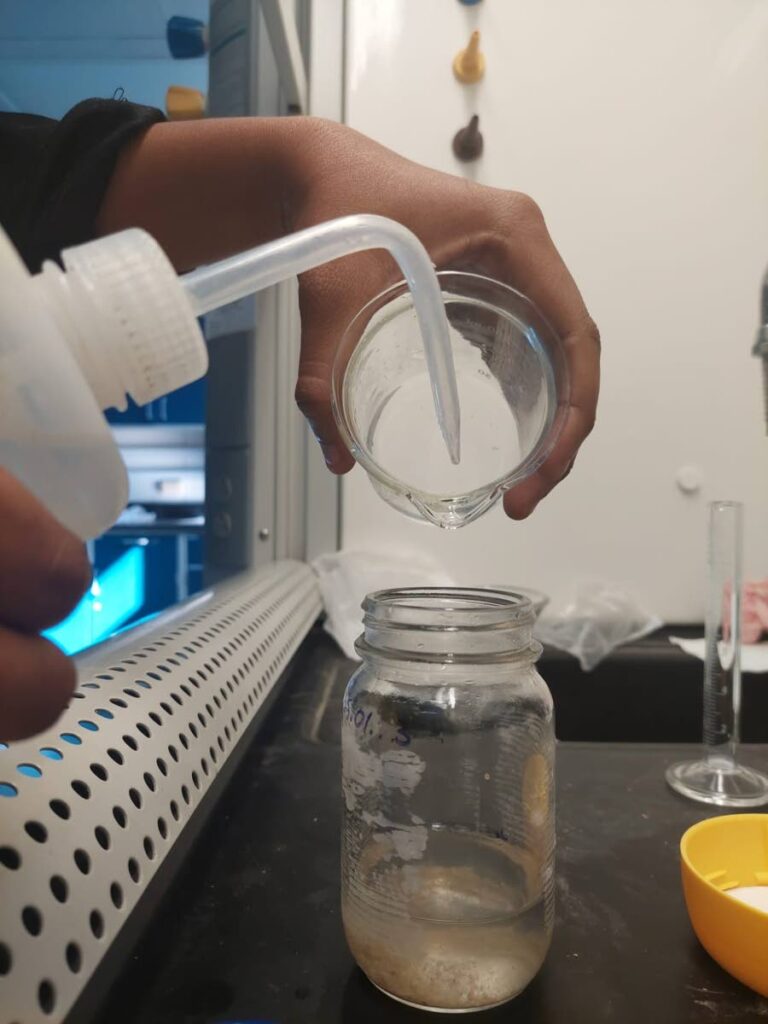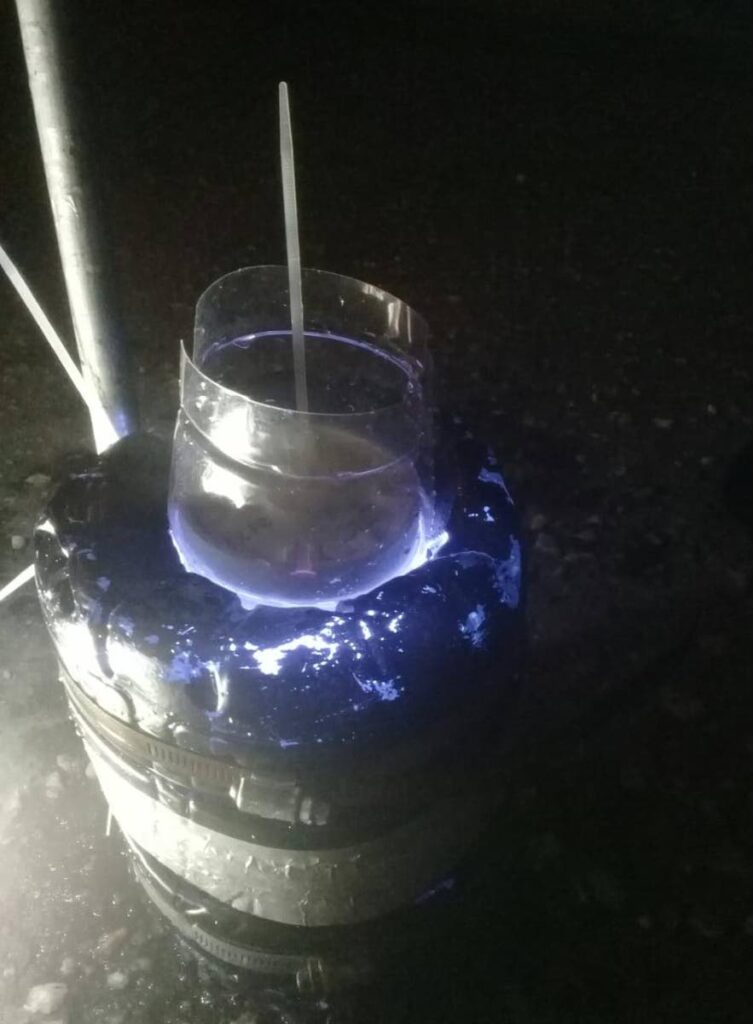Investigating our 'underwater meadows'

The BES-Net TT project team prepared this article which shares information on current research being undertaken on the pollination of seagrasses in two wetland systems in Trinidad and Tobago.
The annual World Wetlands Day was observed on February 2 with the theme, It’s Time for Wetlands Restoration. Much focus on wetlands has been given to mangrove ecosystems, however in some coastal zones, seagrasses are present and are equally important to the life of wetland systems.
Seagrasses are usually found fringing coasts at bays and estuarine areas of a marine-freshwater interface. These are very productive areas that are teeming with organisms from diverse animal groups that live, feed and grow among these "underwater meadows."
Often confused with seaweeds, seagrasses are in fact closely related to land plants and, surprising to some, they also produce flowers and seeds. The pollination of seagrasses may not only be facilitated by water currents, but is possibly aided by marine organisms.

This article shares on the work that is currently underway to investigate seagrass pollination in Trinidad and Tobago.
Ecosystem services of seagrasses
Seagrasses are rich in biodiversity, providing habitat for several organisms and a nursery for many commercially important fish and shellfish species. The grasses, rooted on the seabed also perform a role in protection of the coast from damage during storms. Seagrasses are also an important carbon sink. These areas therefore provide several ecological services, but unfortunately, they are generally in decline in the coastal waters of TT and globally. The main threats facing seagrasses are unregulated coastal development and pollution. Understanding the patterns of flowering in seagrasses and identifying their main animal pollinators are critical clues to assist in the recovery of these systems.
Sunset with the seagrasses

The Biodiversity and Ecosystem Services Network Trinidad and Tobago project (BES-Net TT), which is being undertaken by the Ministry of Planning and Development, Government of TT through the support of the United Nations Development Programme (UNDP), is currently investigating seagrass systems at Bon Accord lagoon, Tobago and Williams Bay, Trinidad. The research work, which is being led by marine researcher, Dr Kelly Kingon, was initiated in 2022 and continues through the first half of 2023.
On a weekly basis and generally near the sunset hour, Kingon and her team head into the seagrasses to carry out a survey of the system. The sunset hour was selected as the preferred time for the sampling exercise as several seagrass species found at these locations are believed to flower at night. The research team’s data collection is on the presence and absence of flowers on the seagrasses, and the marine organisms seen at the survey sites and conditions of the site on visits.
Importance of data collected
At the start of this research, Kingon delivered a webinar on the work to be performed and noted that as an often-overlooked system, information on seagrasses is sparse. The information collected by this research study will however illuminate current gaps on the time of year in which seagrass flowering occurs, and factors which may be driving the flowering of seagrasses. Working with other researchers that have explored the topic elsewhere, a database of pollinator species associated with local seagrass species will be developed for future reference. The BES-Net TT project hopes to share more on the results of this study at the end of the field work. Stay tuned to learn more by following the project’s Facebook page.
* Seagrasses and their reproduction, the mystery of underwater pollination - https://www.youtube.com/watch?v=ZECR_62Z_K0

Comments
"Investigating our ‘underwater meadows’"